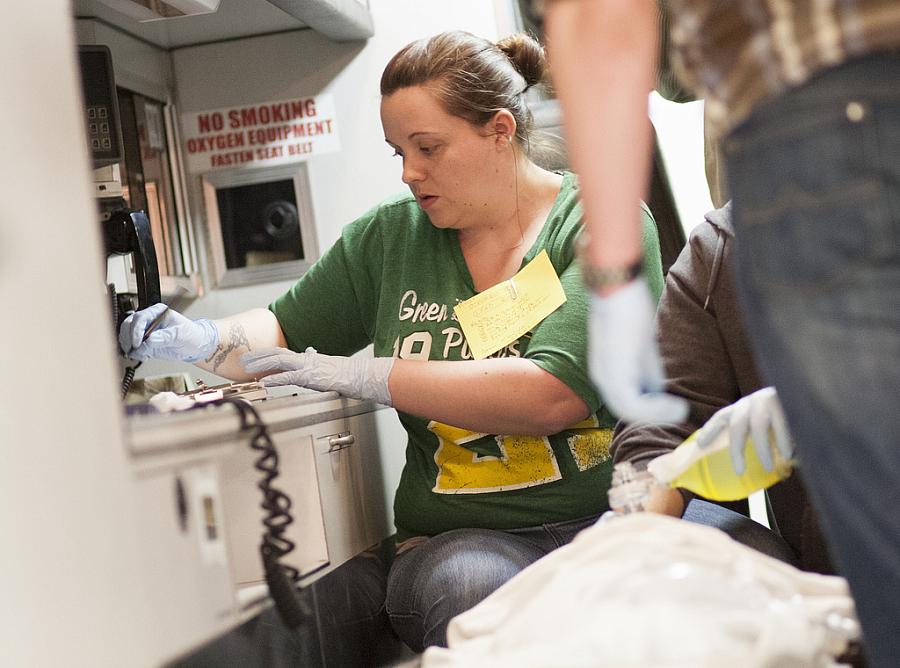Has Anyone Seen the School Nurse?

You don’t have to be a card-carrying AARP member to recall the days when a scraped knee or rising fever was a sure ticket to see the school nurse. But those days are increasingly a thing of the past for today’s school kids.
Consider California’s numbers: 57 percent of school districts have no nurse at all, and even where school nurses do exist, they oversee an average of six schools, according to numbers released by the Lucile Packard Foundation for Children’s Health. That means there are districts in Yuba County where the nurse-student ratio clocks in at one nurse for every 13,838 kids.
For comparison, the National Association of School Nurses (NASN) recommends at least one nurse for every 750 students.
Nationwide, an estimated 45 percent of public schools have a full-time on-site school nurse. An additional 30 percent have a part-time nurse, typically responsible for multiple schools.
The shortage problem often comes down to budget cutbacks and a lack of funding. From Los Angeles to Ohio to Philadelphia, school nurses have faced widespread layoffs in recent years as districts confront funding shortfalls and deficits.
While school faculty and staff may be able to put on a Band-Aid or take a temp and send a kid home, the lack of a trained nurse can have dire consequences in more serious situations. In one widely reported story from 2011, 10-year-old Mercedes Mears arrived at her school in Tacoma, Wash., having difficulty breathing. While the school knew Mears suffered from asthma and food allergies and had a health plan and EpiPen on hand for her, the school nurse wasn’t scheduled to be in that day. The health clerk present called paramedics, but didn’t give Mears the injection or attempt CPR after the girl collapsed. By the time the medics arrived, Mears was in cardiac arrest and died shortly after.
That may sound like an extreme case, but it points to a broader problem highlighted in a new study out last week from California State University, Sacramento’s School of Nursing. The study points makes the point that a shrinking supply of school nurses is increasingly incapable of providing care to the sizeable portion of students who have special health needs.
“About 16% of 6-to-11 year-olds and 20% of 12-to-17 year-olds have a special health care need that may require additional health services at school to allow for their full participation,” according to the Lucile Packard Foundation for Children’s Health, funders of the study. That’s around one in five kids with above-average health needs.
Meanwhile, food allergies have been on the rise. According to the CDC, the prevalence of food allergies among children rose 18% from 1997 to 2007. The agency estimates 88% of schools nationwide have at least one or more students with a food allergy. Severe food allergies can cause life-threatening anaphylaxis, in which the body goes into shock and requires immediate medical care.
The authors of the new study from Cal State outline the intimidating range of services that school staffers are increasingly being asked to take on:
In the absence of nurses, a range of school personnel may be called on to provide health care services, such as administering medication, treating life-threatening allergic reactions, performing gastrostomy tube feeding, injecting insulin, suctioning tracheotomies, and providing urinary catheterization. Often these personnel are not certified, nor did they expect to perform health services.
While a full restoration of funds for adequate school-nursing positions seems unlikely, the study does point to some policy options that could lower the likelihood of another tragedy like the one faced by Mercedes Mears and her family.
Among the most obvious: Require any school staff charged with delivering health care to undergo mandatory training that teaches them basic first aid, CPR and other emergency measures. Other suggestions include putting in place systems at schools to better identify and track students with complex health needs and partnerships between districts and community health providers to increase the range of services students can access.
“California has very weak requirements governing school health and provides little data or guidance for school nurses and administrators to manage the care of children with special health care needs,” Dian Baker, the Cal State study’s lead author, said in a blog post. “We can do better.”
While still uncommon, school-based health centers offer another option for bringing health care to students and have shown particular promise in underserved urban areas, such as Oakland. Such centers can also take advantage of public and private funding sources schools can’t otherwise access.
Photo by COD Newsroom via Flickr.

